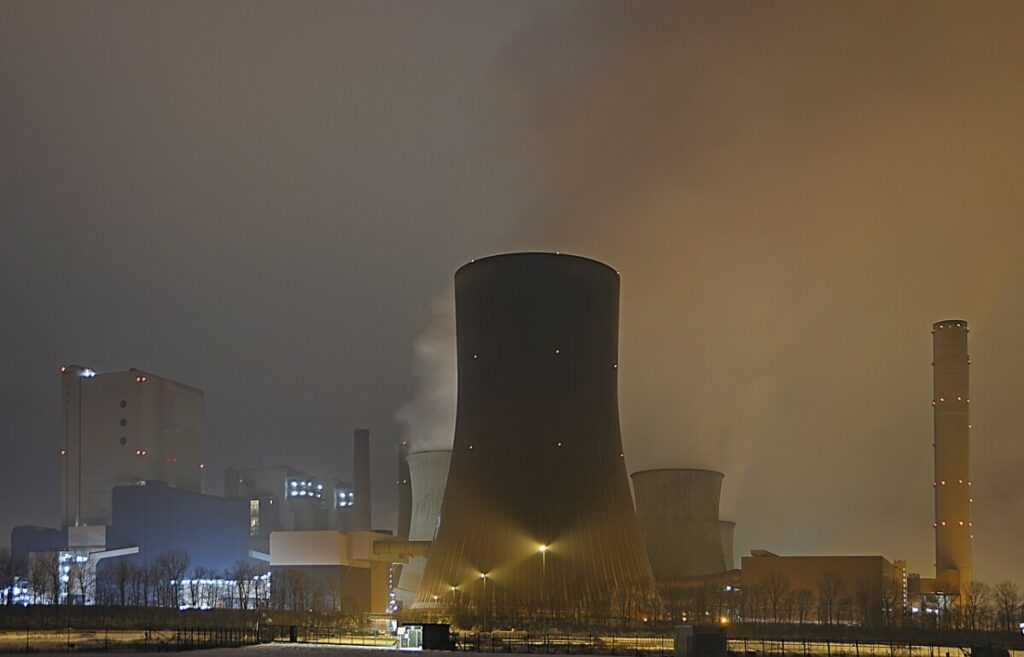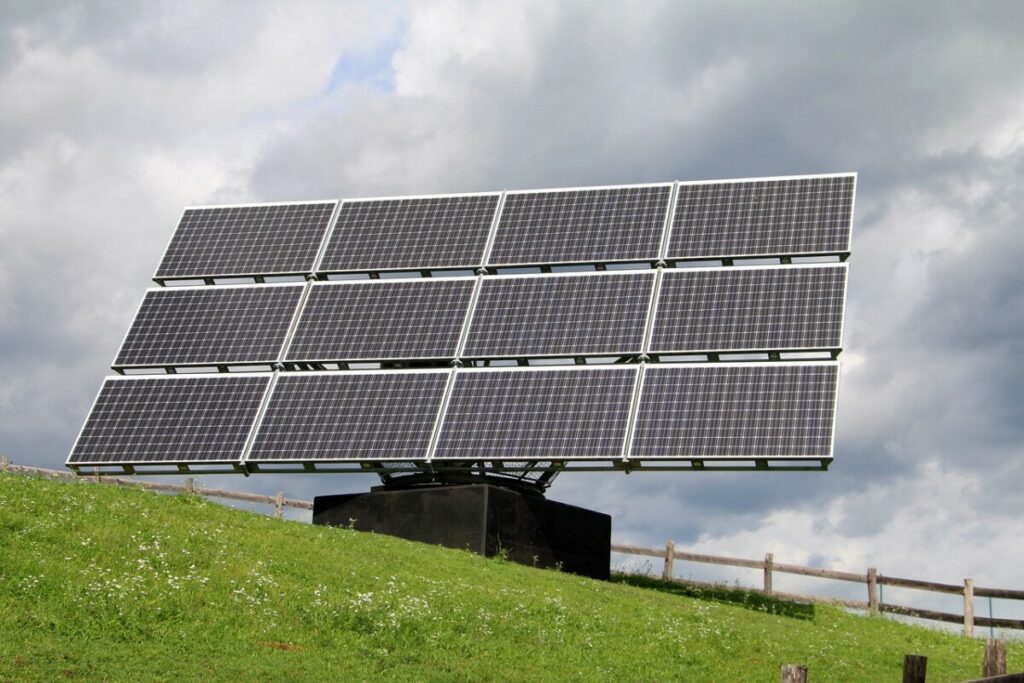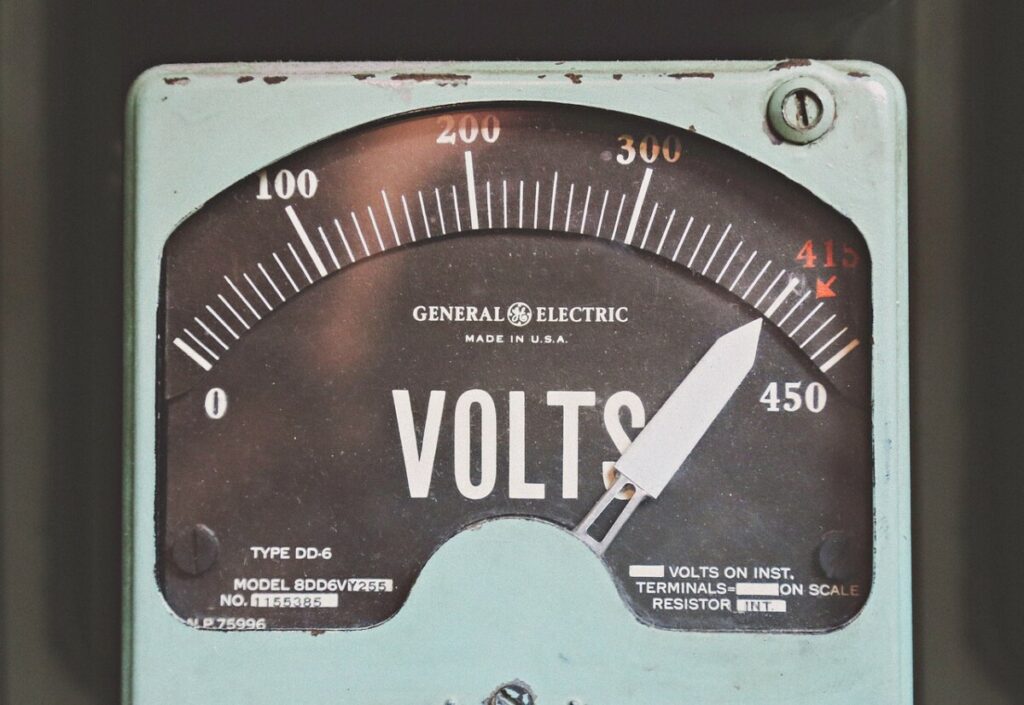How Does Electricity Cause Pollution?
Firstly electricity is a fundamental part of everyday life, yet its production and consumption raise critical environmental concerns. Often, the process of generating electricity involves the use of fossil fuels, which leads to various forms of pollution. Moreover, the impact of these activities on air quality, climate change, and human health is profound. This article delves into how does electricity cause pollution, focusing on the various pollutants released, their sources, and the overall environmental impacts.
How Does Electricity Cause Pollution?
The Role of Fossil Fuels in Electricity Production
Firstly, fossil fuels such as coal, natural gas, and oil are the primary sources of electricity in many parts of the world. When these fuels are burned, they release a significant amount of carbon dioxide (CO2) and other greenhouse gases into the atmosphere. Additionally, sulfur dioxide (SO2) and nitrogen oxides (NOx) are emitted, contributing to air pollution and the formation of acid rain.
Coal-Fired Power Plants
Coal-fired power plants are notorious for their high emissions of CO2, sulfur dioxide, and particulate matter. Thus these plants are major contributors to air pollution and climate change. Furthermore, coal mining itself has severe environmental impacts, including habitat loss, water pollution, and land degradation.
Natural Gas and Air Pollution
Natural gas is often touted as a cleaner alternative to coal. However, its extraction and combustion still release methane, a potent greenhouse gas, and other pollutants. Although burning natural gas produces fewer CO2 emissions compared to coal, it still significantly contributes to global warming and air pollution.
Nuclear Energy: Benefits and Risks
Nuclear energy is another significant source of electricity that comes with its own set of environmental challenges. While nuclear power plants do not emit greenhouse gases during operation, the process of mining uranium, and handling nuclear waste poses serious environmental and health risks.
High-Level Waste from Nuclear Plants
The disposal of high-level nuclear waste remains a major challenge. In fact this waste can remain hazardous for thousands of years, posing long-term environmental risks. Moreover, accidents at nuclear power plants, though rare, can lead to catastrophic consequences for the environment and human health.
Air Pollution and Human Health

Air pollution resulting from electricity production has dire consequences for human health. In fact exposure to pollutants like sulfur dioxide, nitrogen oxides, and particulate matter can lead to respiratory problems, heart disease, and lung cancer. Premature deaths linked to air pollution are a growing concern globally.
Impact on Public Health
Firstly, air pollution is linked to a range of health problems, including asthma, bronchitis, and other respiratory conditions. Secondly, long-term exposure to pollutants can increase the risk of chronic diseases such as heart disease and lung cancer. The public health burden of air pollution is significant, with vulnerable populations, including children and the elderly, being particularly at risk.
Ground-Level Ozone and Health Risks
Ground-level ozone, formed when NOx and volatile organic compounds (VOCs) react in the presence of sunlight, is another harmful pollutant. This type of ozone is a major component of smog and can exacerbate respiratory diseases and decrease lung function.
Environmental Impacts of Electricity Generation
The production of electricity has far-reaching environmental impacts beyond air pollution. These include water pollution, habitat destruction, and contributions to climate change.
Water Pollution from Energy Production
Water pollution can occur from various stages of electricity production. For instance, coal mining operations often release heavy metals and other contaminants into nearby water bodies. Additionally, thermal pollution, caused by discharging heated water from power plants into natural water bodies, can disrupt aquatic ecosystems.
Climate Change and Greenhouse Gas Emissions
Electricity generation is a major source of greenhouse gas emissions, contributing significantly to climate change. Also the burning of fossil fuels releases large amounts of CO2, methane, and other greenhouse gases, which trap heat in the earth’s atmosphere and lead to global warming.
Does Electricity Cause Pollution Conclusion

In summary, understanding how does electricity cause pollution is essential for addressing the environmental and health challenges associated with energy production. Therefore by exploring the impacts of various sources of electricity, we can work towards more sustainable and cleaner energy solutions.
Stay tuned for the next part of the article, where we will delve deeper into renewable energy sources and their potential to mitigate pollution.
Renewable Energy Sources: A Path to Cleaner Energy
The transition to renewable energy sources is crucial for reducing the pollution caused by electricity production. Renewable energy technologies, such as solar power, wind power, hydroelectric power, and geothermal energy, offer cleaner alternatives to fossil fuels.
Solar Energy
Solar energy harnesses the power of the sun to generate electricity. Also solar panels convert sunlight directly into electricity, producing zero emissions during operation. Furthermore, solar energy reduces reliance on fossil fuels and decreases greenhouse gas emissions.
Benefits of Solar Panels
Firstly, solar panels significantly lower carbon dioxide emissions compared to traditional energy sources. Secondly, they contribute to energy independence and security. Lastly, the widespread adoption of solar energy can lead to substantial reductions in air pollution and improvements in air quality.
Wind Power
Wind power is another renewable energy source with minimal environmental impact. Indeed wind turbines convert the kinetic energy of wind into electricity, generating power without emitting pollutants. Additionally, wind farms can be established in various geographic areas, including offshore locations, further diversifying the energy mix.
Advantages of Wind Turbines
Wind turbines provide a sustainable and clean source of energy. They do not produce greenhouse gases or air pollutants during operation. Moreover, advancements in wind technology have made it one of the most cost-effective renewable energy sources available.
Hydroelectric Power

Hydroelectric power, generated by capturing the energy of flowing water, is a reliable and clean energy source. Dams and reservoirs create the necessary conditions for generating electricity from water. While hydroelectric power is generally considered environmentally friendly, it does have some ecological impacts.
Environmental Considerations
The construction of dams and reservoirs can lead to habitat loss and changes in land use. However, once operational, hydroelectric power plants produce electricity without emitting greenhouse gases or air pollutants. Consequently, they play a vital role in reducing the overall environmental footprint of electricity production.
Geothermal Energy
Geothermal energy utilizes the heat from within the earth to generate electricity. This renewable resource is particularly effective in regions with high geothermal activity. Geothermal power plants emit very low levels of greenhouse gases compared to fossil fuel-based power plants.
Benefits and Challenges
Geothermal energy provides a stable and reliable source of electricity. However, the geographical limitation of geothermal resources means it cannot be widely implemented everywhere. Despite this, it remains a crucial component of a diversified and clean energy strategy.
The Role of Nuclear Energy in Reducing Pollution

Nuclear energy, while controversial, offers a low-carbon alternative to fossil fuels. Nuclear reactors generate significant amounts of electricity without emitting greenhouse gases during operation. The primary environmental concern with nuclear energy revolves around waste management and the potential for catastrophic accidents.
Advances in Nuclear Technology
Recent advancements in nuclear technology, such as small modular reactors (SMRs) and improved safety measures, aim to address these concerns. SMRs offer the potential for safer and more flexible nuclear power generation, potentially reducing the environmental risks associated with traditional nuclear power plants.
Air Quality Improvements and Public Health Benefits
The shift to renewable energy sources and cleaner electricity production methods has profound implications for air quality and public health. By reducing emissions of sulfur dioxide, nitrogen oxides, and particulate matter, cleaner energy sources can lead to significant health improvements.
Health Benefits of Cleaner Air
Improved air quality can lead to fewer respiratory and cardiovascular health problems. Reductions in pollutants can decrease the incidence of asthma, bronchitis, heart disease, and lung cancer. Moreover, better air quality can result in fewer premature deaths and overall improvements in public health.
The Clean Air Act and Regulatory Measures
In the United States, the Clean Air Act has been instrumental in reducing air pollution from electricity production. This legislation sets standards for emissions of pollutants and encourages the adoption of cleaner technologies. Continued regulatory measures and policies are essential for further improvements in air quality and public health.
Does Electricity Cause Pollution Conclusion
In conclusion, transitioning to renewable energy sources and improving existing technologies are critical steps in reducing the pollution caused by electricity production. By embracing cleaner energy options, we can mitigate the environmental and health impacts of our energy consumption. This shift not only benefits the planet but also ensures a healthier future for all.
The next section will explore the economic and social impacts of transitioning to renewable energy sources, highlighting the potential benefits and challenges involved.
Economic and Social Impacts of Transitioning to Renewable Energy

The shift towards renewable energy sources has far-reaching economic and social implications. While the transition promises numerous benefits, it also presents certain challenges that must be addressed. Understanding these impacts is essential for making informed decisions about our energy future.
Economic Benefits of Renewable Energy
Firstly, renewable energy sources can stimulate economic growth and job creation. The renewable energy sector has already seen substantial growth in recent years, creating millions of jobs worldwide. Jobs in manufacturing, installation, maintenance, and research and development contribute to a vibrant and resilient economy.
Cost Reductions and Energy Independence
Renewable energy technologies have become increasingly cost-competitive with traditional fossil fuels. As technology advances and economies of scale are realized, the cost of renewable energy continues to decrease. This cost reduction enhances energy independence by reducing reliance on imported fossil fuels, thereby improving national security and economic stability.
Does Electricity Cause Pollution
Challenges of Transitioning to Renewable Energy
Despite the many benefits, transitioning to renewable energy also presents challenges. One significant challenge is the intermittency of some renewable energy sources, such as solar and wind power. These sources are dependent on weather conditions and time of day, which can lead to variability in electricity production.
Grid Integration and Energy Storage
To address the intermittency issue, advancements in grid integration and energy storage are crucial. Energy storage technologies, such as batteries and pumped hydro storage, can store excess energy generated during peak production times for use during periods of low production. Additionally, modernizing the grid to accommodate distributed energy sources is essential for a reliable and resilient energy system.
Does Electricity Cause Pollution

Social Impacts and Community Engagement
The transition to renewable energy also has significant social impacts. It requires active community engagement and support to ensure a just and equitable transition. Local governments and communities must be involved in the planning and implementation of renewable energy projects to address concerns and maximize benefits.
Benefits to Local Communities
Renewable energy projects can bring numerous benefits to local communities. They can create local jobs, increase tax revenues, and stimulate economic development. Furthermore, community-owned renewable energy projects empower local populations and ensure that the benefits of clean energy are widely shared.
Renewable Energy and Environmental Justice
Environmental justice is a critical aspect of the renewable energy transition. Historically, marginalized communities have borne the brunt of pollution and environmental degradation. The shift to renewable energy provides an opportunity to address these disparities by ensuring that all communities have access to clean energy and the associated health benefits.
Addressing Disparities
Policies and programs aimed at promoting renewable energy should prioritize disadvantaged communities. This includes providing funding for renewable energy projects in low-income areas, supporting workforce training programs, and ensuring that all communities benefit from cleaner air and improved public health.
The Global Context: International Efforts and Collaboration
The transition to renewable energy is a global challenge that requires international collaboration. Organizations such as the International Energy Agency (IEA), the United Nations, and the European Union are playing key roles in promoting renewable energy and addressing climate change.
International Energy Agency (IEA)
The IEA provides policy advice, data, and analysis to help countries develop sustainable energy policies. By promoting energy efficiency, renewable energy technologies, and research and development, the IEA supports the global transition to cleaner energy.
United Nations and Climate Action
The United Nations Framework Convention on Climate Change (UNFCCC) and the Paris Agreement are pivotal in guiding international efforts to combat climate change. These frameworks encourage countries to set ambitious climate targets and invest in renewable energy and other climate mitigation strategies.
European Union Initiatives
The European Union has been a leader in promoting renewable energy and reducing carbon emissions. Through initiatives such as the European Green Deal, the EU aims to become climate-neutral by 2050, with significant investments in renewable energy, energy efficiency, and sustainable infrastructure.
Does Electricity Cause Pollution: Frequently Asked Questions (FAQs)

How does electricity cause pollution?
Electricity causes pollution primarily through the burning of fossil fuels, which releases greenhouse gases and other pollutants into the atmosphere. This process contributes to air pollution, climate change, and various health issues.
What are the environmental impacts of coal-fired power plants?
Coal-fired power plants emit large amounts of CO2, sulfur dioxide, and particulate matter, which contribute to air pollution, acid rain, and respiratory health problems. Additionally, coal mining can lead to habitat destruction and water pollution.
How do renewable energy sources reduce pollution?
Renewable energy sources, such as solar and wind power, generate electricity without emitting greenhouse gases or other pollutants. This helps reduce air pollution, mitigate climate change, and improve public health.
What are the economic benefits of renewable energy?
Renewable energy can create jobs, reduce energy costs, and enhance energy security. The growth of the renewable energy sector stimulates economic development and reduces reliance on imported fossil fuels.
How can energy storage help with renewable energy intermittency?
Energy storage technologies, such as batteries, can store excess energy generated by renewable sources during peak production times. This stored energy can then be used when production is low, ensuring a stable and reliable energy supply.
Does Electricity Cause Pollution Conclusion
In conclusion, the transition to renewable energy sources is essential for reducing the pollution caused by electricity production and mitigating its environmental and health impacts. While the shift presents challenges, the economic, social, and environmental benefits make it a crucial step towards a sustainable future. In the next section, we will explore the role of policy and innovation in driving the renewable energy transition and ensuring its success.
Policy and Innovation: Driving the Renewable Energy Transition
The successful transition to renewable energy relies heavily on policy support and technological innovation. Governments, businesses, and individuals all have roles to play in promoting clean energy and reducing the environmental impacts of electricity production. This section examines the policies and innovations that are crucial for driving the renewable energy transition.
Government Policies and Regulations
Governments around the world are implementing policies and regulations to support renewable energy and reduce pollution from electricity production. These policies include subsidies, tax incentives, and mandates that encourage the adoption of clean energy technologies.
Subsidies and Incentives
Firstly, subsidies and incentives for renewable energy projects can significantly reduce the cost of clean energy technologies. These financial supports help to level the playing field between renewable energy and fossil fuels, making it more economically viable to invest in solar, wind, and other renewable sources.
Renewable Energy Standards
Renewable energy standards (RES) or renewable portfolio standards (RPS) require utilities to obtain a certain percentage of their electricity from renewable sources. These mandates drive demand for clean energy and stimulate investments in renewable energy projects.
Carbon Pricing
Carbon pricing, including carbon taxes and cap-and-trade systems, is another effective policy tool. By putting a price on carbon emissions, these mechanisms incentivize reductions in greenhouse gas emissions and encourage the adoption of cleaner energy sources.
Does Electricity Cause Pollution

Technological Innovations
Innovation in renewable energy technologies is essential for overcoming the challenges associated with clean energy production and improving efficiency. Advances in solar, wind, and energy storage technologies are making renewable energy more accessible and cost-effective.
Solar and Wind Technology
Continued improvements in solar panel efficiency and wind turbine design are increasing the energy output and reducing the costs of these technologies. Additionally, innovations such as floating solar panels and offshore wind farms are expanding the potential locations for renewable energy projects.
Energy Storage Solutions
Energy storage is critical for addressing the intermittency of renewable energy sources. Innovations in battery technology, such as lithium-ion and solid-state batteries, are enhancing the capacity and lifespan of energy storage systems. Other storage solutions, like pumped hydro and compressed air energy storage, also play a vital role in maintaining a stable energy supply.
Does Electricity Cause Pollution
The Role of Businesses and Individuals
Businesses and individuals also have significant roles to play in the transition to renewable energy. Corporate sustainability initiatives and personal energy choices can collectively drive demand for clean energy and reduce overall pollution.
Corporate Sustainability
Many companies are committing to renewable energy and sustainability goals. By investing in renewable energy projects, improving energy efficiency, and reducing carbon footprints, businesses can lead by example and contribute to the broader adoption of clean energy.
Personal Energy Choices
Individuals can also make a difference by choosing renewable energy options for their homes, supporting clean energy policies, and reducing personal energy consumption. Actions such as installing solar panels, using energy-efficient appliances, and advocating for clean energy policies can collectively impact the environment positively.
Does Electricity Cause Pollution FAQs: Continued

How can individuals contribute to reducing pollution from electricity production?
Individuals can contribute by using renewable energy for their homes, improving energy efficiency, and supporting clean energy policies. Simple actions like turning off lights when not in use and using energy-efficient appliances can also make a difference.
What role do businesses play in the renewable energy transition?
Businesses play a crucial role by investing in renewable energy projects, setting sustainability goals, and reducing their carbon footprints. Corporate commitments to clean energy can drive significant progress towards a more sustainable energy future.
What are the challenges of integrating renewable energy into the grid?
The main challenges include the intermittency of renewable sources like solar and wind, the need for advanced energy storage solutions, and the modernization of the grid to handle distributed energy generation. Overcoming these challenges requires technological innovation and supportive policies.
How does carbon pricing help reduce pollution?
Carbon pricing puts a financial cost on carbon emissions, incentivizing businesses and individuals to reduce their greenhouse gas emissions. By making it more expensive to emit carbon, these policies encourage the adoption of cleaner energy sources and practices.
Does Electricity Cause Pollution Conclusion
The transition to renewable energy is essential for reducing the pollution caused by electricity production and mitigating its environmental and health impacts. Through supportive policies, technological innovation, and collective action, a sustainable and cleaner energy future can be achieved. Governments, businesses, and individuals must work together to overcome the challenges and fully realize the benefits of renewable energy.
In summary, understanding how does electricity cause pollution and taking steps towards cleaner energy solutions are crucial for addressing the environmental and health challenges associated with traditional energy production. By embracing renewable energy, we can ensure a healthier planet and a more sustainable future for generations to come.
Finally if you found our post “Does Electricity Cause Pollution” insightful, please take a moment to share it on your social media and with your friends. Spreading awareness is a crucial step towards reducing pollution. Together, we can make a difference!
Thank you for your support!
Recent Posts
Understanding Energy and Electricity: The Power For Progress
Energy and Electricity Energy and electricity are integral components of modern life, powering everything from homes and businesses to transportation and communication. Without them, the...
The Future of Wind Energy The future of wind energy is set to play a critical role in addressing global energy needs while combating climate change. As renewable energy sources like wind and...


